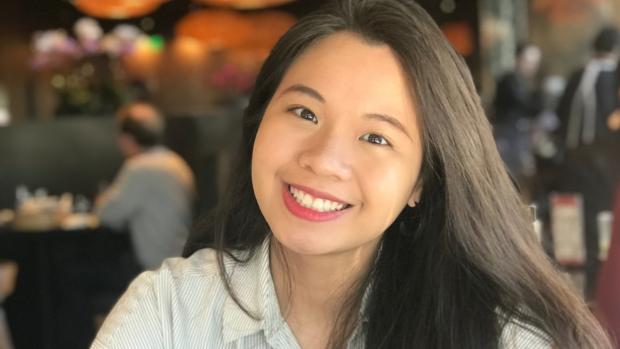Graduate student honored by the American Vacuum Society
Minh Tran garners the coveted Nellie Yeoh Whetten Award

Graduate student Minh Tran was recognized for excellence in the sciences and technologies of interest to the American Vacuum Society
Nellie Yeoh Poh-lin Whetten, a member of the Society of Photo-Optical Instrumentation Engineers who worked on the technical staff at Hewlett-Packard, was just 29 when she passed away in 1989. Her husband, Timothy, conceived of a much more fitting tribute than flowers: he started a fund in her name to support outstanding women scientists and engineers.
NYU Tandon fourth-year graduate student Minh Tran is one recent recipient of that largesse. The American Vacuum Society (AVS) has awarded her its 2021 Nellie Yeoh Whetten Award, aimed at recognizing and encouraging excellence by women in graduate studies in the sciences and technologies of interest to AVS.
In Tran’s case, her research in the Department of Chemical and Biomolecular Engineering — conducted under the mentorship of department chair and Alstadt Lord Mark Professor Eray Aydil — has the ambitious goal of increasing silicon solar cell efficiencies beyond the Shockley-Quessier fundamental limit, a figure first calculated in 1961 that represents the maximum theoretical efficiency of a solar cell. “Surpassing the Shockley-Quessier limit in silicon solar cells is a 60-year old problem,” she says. “Doing so would increase their efficiencies from the current 26% to values approaching 40%, decrease solar electricity cost from 4.6 cents/kWh to as low as 3.6 cents/kWh, helping the national power grid move towards greater renewable energy use and decarbonization.”
She is leveraging a phenomenon known as quantum cutting, whereby one photon with high energy is converted into two or more low-energy photons, and is exploring the possibilities of finding lead-free halide perovskites to replace less environmentally sensitive options. Besides improving solar cell efficiency, the impact of her work could potentially be even broader, since halide perovskites could act as broadband light-absorbing hosts to light-emitting rare-earth metals, for applications in lasers and other light-emitting devices.
The AVS also takes into consideration a candidate’s service to the scientific community, and Tran’s contributions in that realm are as noteworthy as her cutting-edge research and academic rigor. “When I joined NYU from the University of Minnesota., Minh and another student, Iver Cleveland, set up an operational lab totally from scratch, and she has since mentored multiple undergraduate students, training them on fundamentals skills such as using gloveboxes, obtaining X-ray diffraction data, and measuring thin films and solutions’ absorbance and photoluminescence,” Aydil says. “She makes sure that they understand the research goals and principle behind each technique, and, as a result, they are equipped to make valuable contributions from almost the day they first walk into the lab. In fact, one of the students she has mentored is credited on one of her three first-author papers.”
Tran’s attention to detail resulted in additional service to the metal halide perovskite community and the general chemistry audience: the discovery of several discrepancies in already published data, prompting one peer reviewer to write, “This is how truth comes out.”




